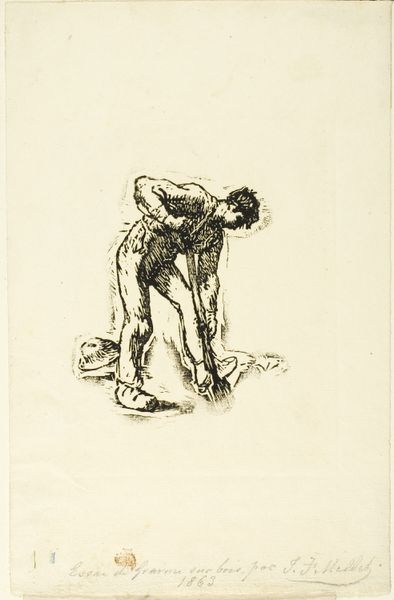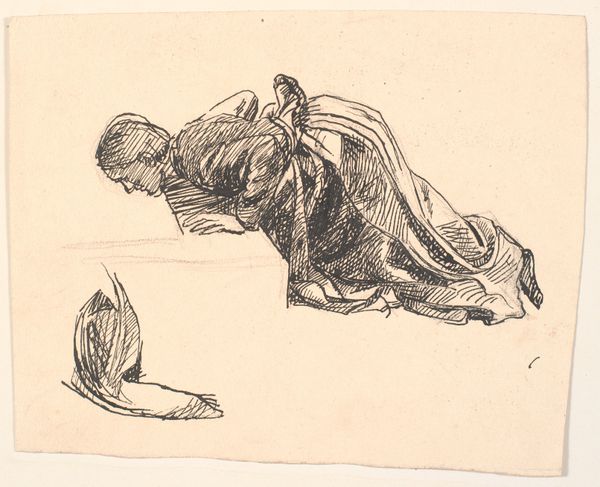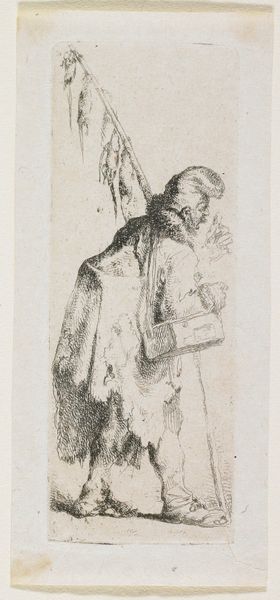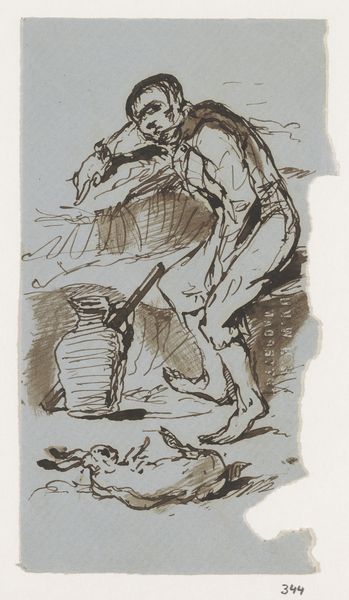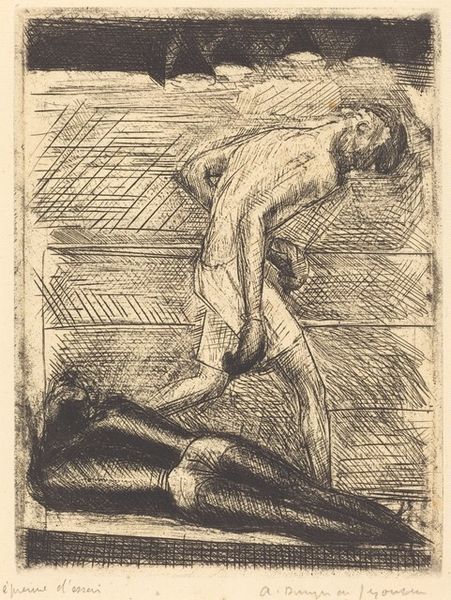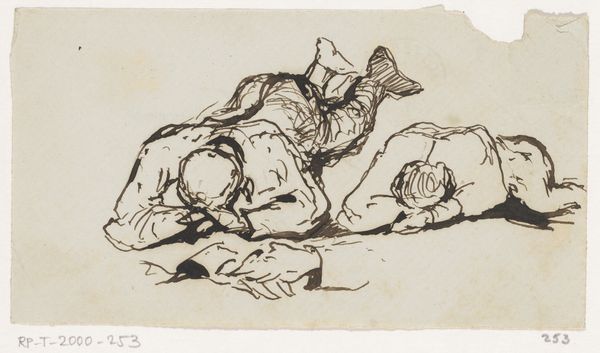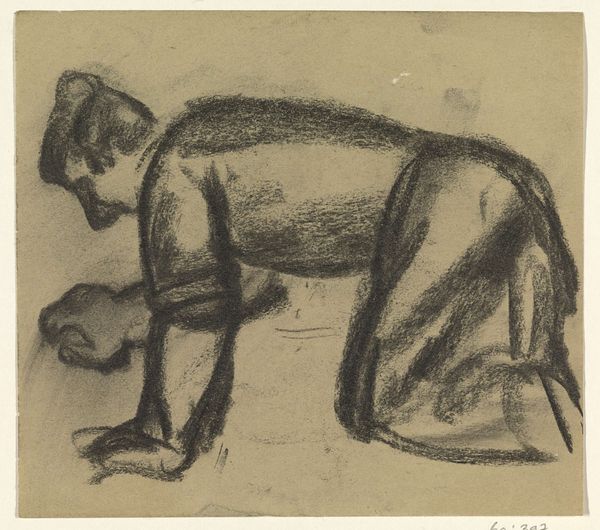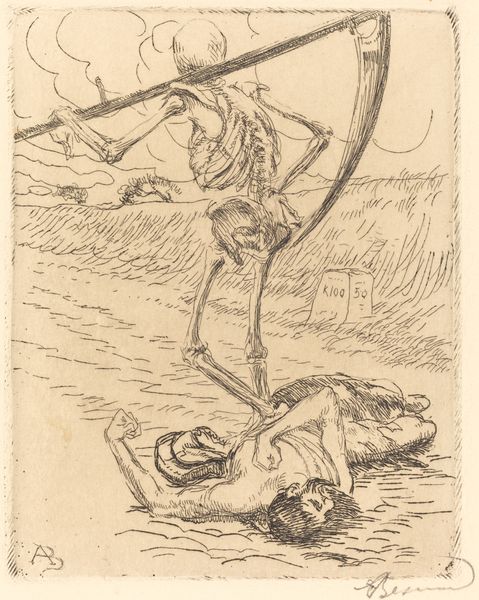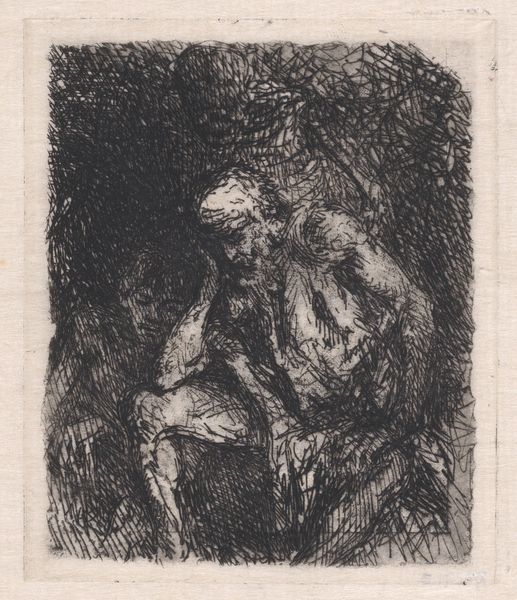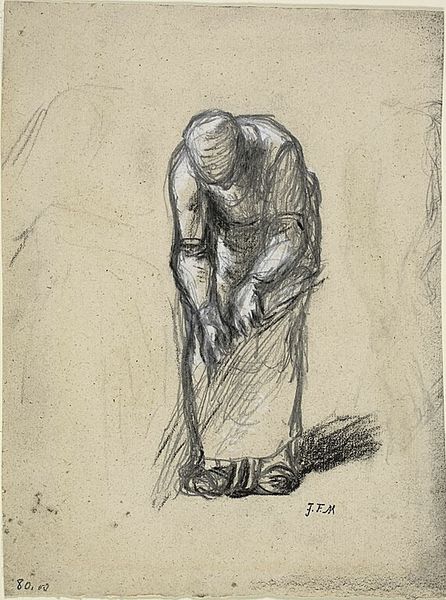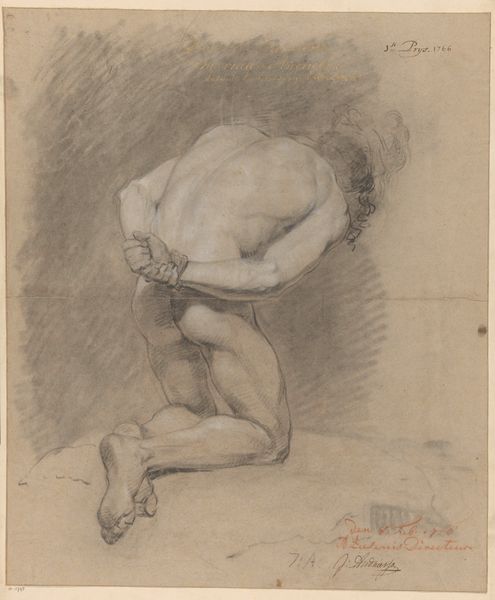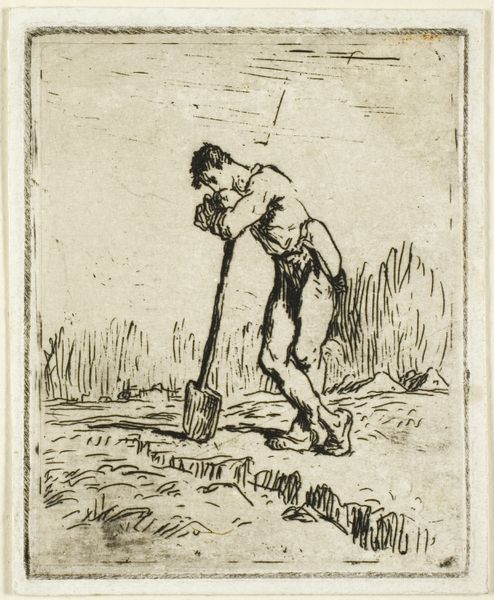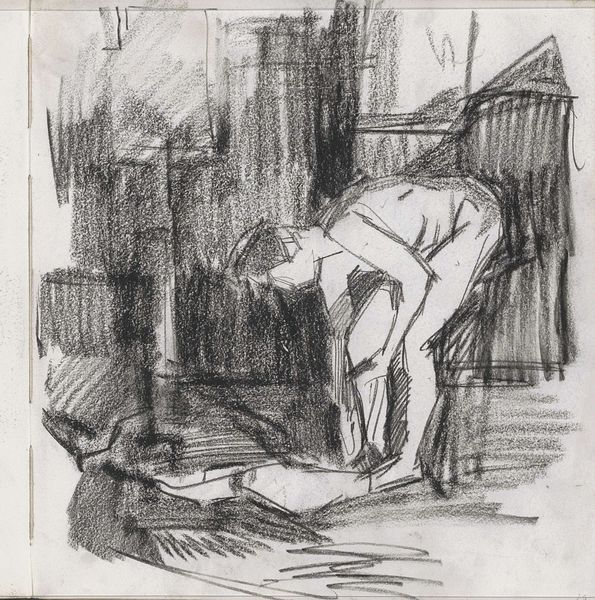
Dimensions: 173 × 122 mm
Copyright: Public Domain
Jean-François Millet made this etching, Peasant Digging, in nineteenth-century France. Millet challenged the norms of academic art, which often glorified historical or mythological scenes. Instead, he chose to depict the daily life of rural laborers. This image is loaded with social commentary. The peasant is shown in a posture of labor, his body bent and strained. Millet doesn't idealize rural life; rather, he confronts the viewer with the physical demands of agricultural work. The composition and the medium add to the artwork's meaning. The stark, unrefined lines of the etching emphasize the harshness of the peasant's existence. Art historians can look to period sources like agricultural reports, political pamphlets, and even literature to understand the social context of Millet's work. These resources help us recognize the radical nature of his focus on the working class and the institutions that shaped their lives. Ultimately, this piece prompts us to reflect on the social structures of 19th century France and the role of art in questioning those norms.
Comments
No comments
Be the first to comment and join the conversation on the ultimate creative platform.
